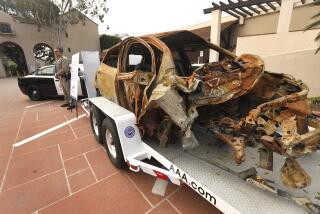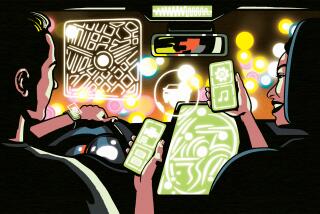ADHD, texting and driving: A deadly mix
- Share via
When it comes to driving, teenagers have a lot of factors working against them: inexperience, impulsiveness, the challenge of navigating their complex social and emotional lives and the road at the same time. Add to that the compulsion to text friends and it’s a downright deadly mix.
Young drivers with attention deficit hyperactivity disorder, or ADHD, have these dangerous challenges in spades: impulsiveness, inattention and cognitive immaturity are hallmarks of the disorder. So even as they struggle to keep their eyes and minds on the road, the allures of an incoming text or the urge to respond to one can be overwhelming. These kids’ higher rate of traffic accidents and citations reflects their struggles behind the wheel as well as in the classroom.
A study published Monday finds that, when texting and driving, new drivers without ADHD look pretty much like drivers with an ADHD diagnosis who were off their medications. Undistracted, teenagers without an ADHD diagnosis spent 0.7% of their simulator drive time out of their lane. When texting, however, they spent almost three times more time outside of their lane - 2.03% of their drive time.
Unmedicated young drivers with ADHD spent 1.76% of their undistracted drive time out of their lane. But that rate doubled to 3.3% of the time when they were distracted by texts. Compared with young drivers without ADHD, these kids also drove with significantly more speed variability - unaccountably speeding up and slowing down. But their average speed, braking reaction time and accident rate was no different.
More than half of seniors in U.S. high schools say they text or email while driving.
The study was conducted by researchers at Cincinnati Children’s Hospital Medical Center and published in JAMA Pediatrics on Monday. Putting a group of new drivers with and without an ADHD diagnosis through three 10-minute driving simulations, the researchers introduced one unexpected event in each driving episode. Drivers drove the routes undistracted for 10 minutes, while reading and responding to texts for another 10 minutes, and while conducting a conversation with a researcher for another 10 minutes.
Interestingly, the study found that speaking on a hands-free device did not impair either group’s driving performance, and in fact, appeared to improve drivers’ lane position. The researchers cite other research that finds that conducting a conversation during a boring task improves visual attention. But they caution that, because they discounted the first minute of each driving condition so as not to have their data marred by carry-over effects, they may have missed the visual distraction of the driver picking up the call.
In an editorial accompanying the study, three University of Pennsylvania injury prevention specialists called the combination of novice driving, ADHD and texting “the perfect storm,” and suggested that measures to protect teen drivers should go beyond the graduated driver licensing, which in most states places restrictions on drivers in the first six months to a year.
Led by Dr. Flaura K. Winston, the group said that physicians and public health experts should explore “a tailored, individualized approach” that matches a teen’s risks with proved strategies to enhance his or her driving safety.







